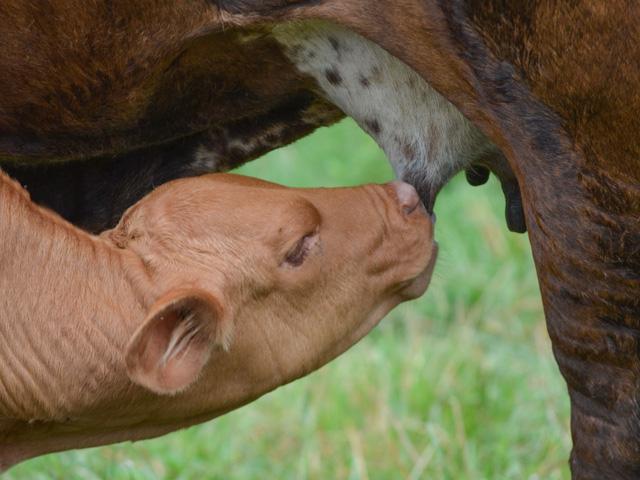Early Weaning in a Drought
Benefits of Weaning a Calf Early in Drought Can Add Up
In the beef industry, early weaning traditionally means taking a calf off its dam anywhere from 90 to 150 days of age. The practice can ramp up management requirements, because not only is a producer caring for the cow and her nutritional requirements, but he is adding those of the calf to his list of responsibilities.
Early weaned calves need a significant amount of protein and energy, more than those that are conventionally weaned. Typically, it's important to compare the costs of these more nutritionally dense feeds and supplements when evaluating whether the practice makes sense. But in a drought, everything can change. Early weaning can literally become a tool to keep cows off the culling line.
Jason Smith, Texas A&M AgriLife Extension beef cattle specialist at Amarillo, explains that early weaning is a situationally dependent management strategy meant to influence, or inflict, positive change on a cow herd. The bottom-line goal should be to use early weaning to make the cow herd more economical to manage. And early weaning can bring some unexpected payoffs, he says.
"We saw increased marbling development by nearly 10% and improved feed efficiency by about 5%," Smith says. "If you are looking to retain ownership or feed out your own calves, this is something to consider. But there are a lot of variables to factor in when considering early weaning, and this is just one of them."
LIMITED FORAGES
Probably one of the most common scenarios where early weaning comes into play is when forages are limited, often because of drought.
"Because the nutritional demands of lactation are so high, our expectation is if we wean that calf early and dry the cow off during a portion of her lactation curve, we can decrease her nutritional requirements and maintain her at an acceptable body condition. This is important when feed resources are limited," Smith says.
P[L1] D[0x0] M[300x250] OOP[F] ADUNIT[] T[]
He adds: "When we've retrospectively applied economics to research data, it generally only made sense to early wean across the entire cow herd in one out of every five years."
In Nebraska, Jim Jansen says producers historically consider early weaning if a female is not in the best shape and they need to get a calf off of her to cull her. A more pressing concern today may be the availability and cost of feedstuffs because of drought or feed supplies.
FIRST-CALF HEIFERS
Early weaning is often most economically viable in select situations, including first-calf heifers, second-calf cows and mature cows with low body condition. Holding these females at a body condition above a 4 minimizes failed breedings. Smith says this is because first- and second-calf females have higher nutritional requirements on an equal-bodyweight basis compared to mature cows.
Management goals, however, need to be considered. A producer growing replacements and relying on conception-based selection pressure to build a cow herd well-suited to the environment would find this counter to that strategy. If, on the other hand, a producer is marketing replacements, the aim is a bred heifer. She's not being culled or kept to fit any particular program.
EARLY WEANED CALF HEALTH
While a lot of considerations focus on the female when an early weaning decision is made, there are important factors on the calf side of the equation.
Management of early weaned calves can be challenging. Texas' Smith says that in his experience, the health of these early weaned calves depends on the overall health of the herd.
"Where there is a strong herd-health program, generally there is not going to be an issue with early weaned calves. A comprehensive, preventative program is key. Vaccinations, deworming, all normal preventative health practices are very important. If we are doing what we need to from the cow standpoint independent of how we wean, health on those calves will generally be good."
Smith adds they have observed some situations where aggressive feeding of early weaned calves to promote a high rate of gain or growth led to higher incidences of bloat, acidosis or founder. "It all comes down to feeding management," he stresses. "If you're overly aggressive or not as timely or consistent with feed delivery as you need to be, there can be issues."
In some cases, overfeeding leads to calves becoming foundered, ruining their feet. It's a risk that also exists with creep-feeding, he notes.
"There is a risk of causing hoof conformation issues and laminitis. We've also seen that when we push cattle to mature earlier, they don't always reach their genetic potential for frame size and carcass weight. They get fat and finished before they reach that point," he says. An additional backgrounding or growing phase prior to finishing can offset this.
Victoria Myers can be reached at vicki.myers@dtn.com
Follow her on Twitter @myersPF
(c) Copyright 2022 DTN, LLC. All rights reserved.





